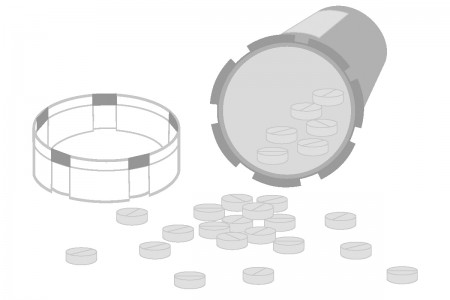
According to the United States Department of Health and Human Services, about half of all Americans now take at least one prescription drug.
The slew of pharmaceutical commercials, media hype and the constant need of consumers and drug companies alike to find a cure for the smallest of health ailments has steered Americans into the vast prescription drug network. Although these medicinal advances have made it possible to curb disease and relieve those who suffer, in the wrong hands they can do the very opposite.
Prescription drugs and over-the-counter medications are the most-abused drugs by adolescents, second only to marijuana, as noted by the National Institute on Drug Abuse. Aspects of popular culture have made it acceptable for teens and college students to engage in this activity, even making it a trendy thing to do at parties and a spectacle for those watching.
Depressants, opioids, stimulants, painkillers and narcotics are among the drugs used by students to lose weight, fit in, alter their personalities and get high.
But prescription drug abuse isn’t just for the thrill seekers anymore. Increased academic pressure on students has made this illegal activity all too normal.
Adderall, a stimulant used primarily to treat ADHD, is often solicited from students who’ve been prescribed the drug by their peers. It is regularly used to enhance performance while studying.
Although it does increase brain activity and alertness, many students misjudge how much it will affect their bodies, especially in a significant dosage.
What makes prescription drugs so popular is their accessibility. They are easier to obtain than typical street drugs and, more often than not, come from the medicine cabinets of family members and friends. The Substance Abuse and Mental Health Services Administration reports that in 2008, half of teenagers said they abused prescription painkillers because they aren’t illegal. It was also reported that one in three believe there is less shame attached to using prescription drugs than to street drugs.
When using drugs that are not prescribed by a medical professional, the results can be devastating. Prescription drug abusers are more likely to have an accident, show a decrease in cognitive function and suffer from mood changes, paranoia, organ damage, difficulty breathing, seizure, stroke, heart attack and death while illegally using legal drugs.
These risks are even greater when students combine prescription drug use with activities such as drinking and smoking. Dangerous interactions can also occur if combined with certain over-the-counter medications.
Without early treatment, addiction is likely to occur along with withdrawal symptoms and increased drug tolerance. Behavioral treatment might even be necessary if the addiction is severe.
Prescription drug abuse is on the rise and doesn’t seem to be going away anytime soon.
According to data from the United States Centers for Disease Control and Prevention, in 2009 drugs outnumbered motor vehicle accidents as a cause of death, killing more than 37,000 people across the country.
Many people live more productive and healthy lives thanks to prescription drugs, but students and adolescents are especially at risk when they do not abide by the regulations that come with taking a prescription drug legally. Although these drugs might seem like an effective measure for having fun and increasing academic and athletic performance, they remain only safe for individuals who were prescribed the drug by their doctors. If you or someone you know is abusing prescription drugs, contact the Office of Alcohol, Drug and Health Education or visit their website at adhe.gmu.edu.






Comments